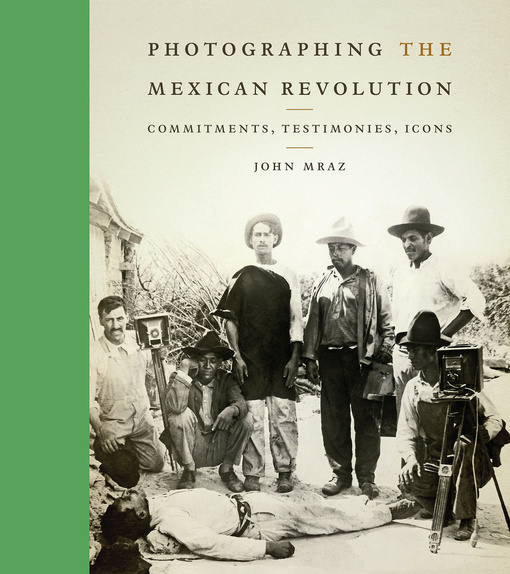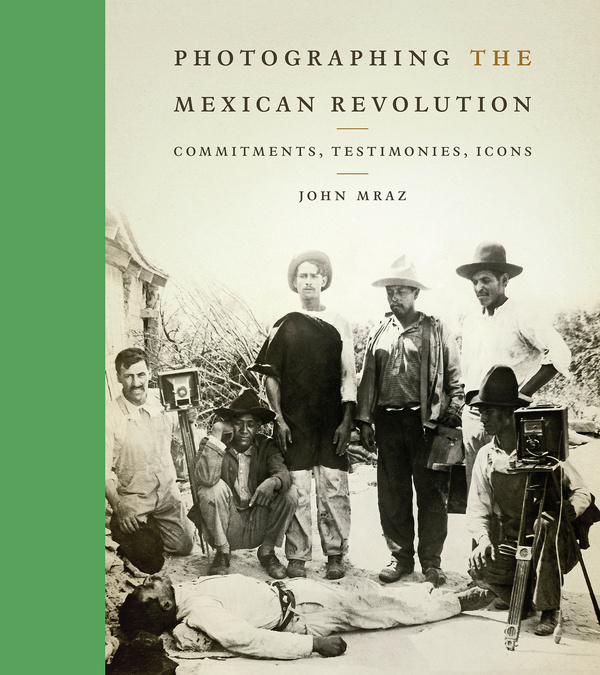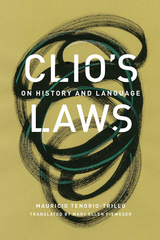Photographing the Mexican Revolution
Commitments, Testimonies, Icons
The Mexican Revolution of 1910–1920 is among the world’s most visually documented revolutions. Coinciding with the birth of filmmaking and the increased mobility offered by the reflex camera, it received extraordinary coverage by photographers and cineastes—commercial and amateur, national and international. Many images of the Revolution remain iconic to this day—Francisco Villa galloping toward the camera; Villa lolling in the presidential chair next to Emiliano Zapata; and Zapata standing stolidly in charro raiment with a carbine in one hand and the other hand on a sword, to mention only a few. But the identities of those who created the thousands of extant images of the Mexican Revolution, and what their purposes were, remain a huge puzzle because photographers constantly plagiarized each other’s images.
In this pathfinding book, acclaimed photography historian John Mraz carries out a monumental analysis of photographs produced during the Mexican Revolution, focusing primarily on those made by Mexicans, in order to discover who took the images and why, to what ends, with what intentions, and for whom. He explores how photographers expressed their commitments visually, what aesthetic strategies they employed, and which identifications and identities they forged. Mraz demonstrates that, contrary to the myth that Agustín Víctor Casasola was “the photographer of the Revolution,” there were many who covered the long civil war, including women. He shows that specific photographers can even be linked to the contending forces and reveals a pattern of commitment that has been little commented upon in previous studies (and completely unexplored in the photography of other revolutions).
Mraz and his editor at the University of Texas Press have produced a highly readable and lavishly illustrated book, perfect for a broad range of readers. With this book, advanced undergraduates will get an aesthetically rich and authoritatively narrated introduction to the Mexican Revolution, and graduate students will engage with the thinking of a pathbreaking historian of visual culture.
The relationship between humans and their environment also plays a role in John Mraz's Photographing the Mexican Revolution, which masterfully analyzes the work of revolutionary-era photographers. Widely considered the preeminent expert on the history of Mexican photography, Mraz compiles and interprets more than two hundred photographs from the 1910s, including many hitherto unknown images...For that reason alone, this is a book worth buying.
Historians of Mexican politics and society will benefit from this book’s synthesis of the latest research and original analysis.
John Mraz is undoubtedly the world expert on Mexican photography. . . . In addition to correcting the historical record and offering a fresh vision of the history of Mexican photography and its links to revolutionary and post-revolutionary governments, Mraz brings to light dozens of photographs that are virtually unknown. His careful exploration of the archives has led him to unearth photographs of almost every single chapter of the Mexican Revolution: from the rise of Madero to the presidency of Álvaro Obregón. American readers will see most of these images for the first time, and Mraz provides an excellent historical and cultural gloss to each of them. Together, these photos—almost 200 in total—provide the most ambitious—and most historically accurate—iconographic representation of the Mexican Revolution.
John Mraz is Research Professor at the Instituto de Ciencias Sociales y Humanidades, Universidad Autónoma de Puebla (Mexico) and National Researcher III. Among his books are Looking for Mexico: Modern Visual Culture and National Identity; Nacho López, Mexican Photographer; La mirada inquieta: Nuevo fotoperiodismo mexicano, 1976–1996; and Uprooted: Braceros in the Hermanos Mayo Lens.
- Acknowledgments
- Introduction
- Chapter 1. The Porfiriato: From the Studio to the Street
- Chapter 2. Representing the Revolution
- Chapter 3. The Myth of the Casasolas
- Chapter 4. Learning to Photograph War
- Chapter 5. The Zapatista Movement and Southern Cameras
- Chapter 6. Photographing the Reaction
- Chapter 7. The Caudillo of the Cameras?
- Chapter 8. The Advantages of Photographing the Constitutionalist Movement
- Epilogue: The Icons of the Mexican Revolution
- Notes
- Bibliography
- Index






